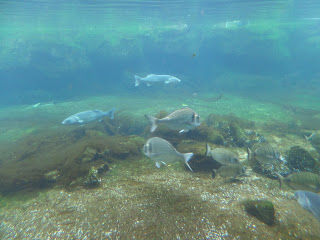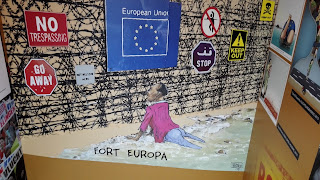A trip into Utrecht to see the Utrecht Archives, and also to look at the black and white photograph exhibition. The photographer was called F. Van der Werf, and the photographs were taken before World War II. He set himself up as an independent photographer in 1930 and then became a press photographer after the war. He stopped work in 1962.
The Utrecht Archives is now based in a building that had once been a courthouse, first as the Court of Utrecht (1837) and then as the Provincial Court of Justice (1877). From 2001 to 2008 the building was subject to intensive conversion and restoration work.
Initially there had been an abbey here, the Benedictine Abbey of St Paul. It was probably built about 1000AD but during the Reformation there was no need for an abbey so the buildings were sold off and used for other purposes. The church was demolished around 1725. The cellar and some of the walls can still be seen in their original condition in the building.
There is a lovely cafe on the bottom floor, on the left, with a large terrace outside. There appeared to be a hotel attached to the back of the building.
A beautiful wrought iron staircase and domed ceiling dominated the centre of the building.Walter resting in a very light and airy sitting area.
Tucked away at the back of the bottom floor was a carriage. Once seated inside one pressed a button, either English or Dutch, and listened to a narrator describing the passing scenery, a series of old paintings and drawings. The carriage moved as if pulled by a team of horses. Of course it did not move. The only part that moved were the paintings and drawings. Very strange but quite effective.
There was also a small theatre and with a press of a button, a film about different historical periods of Utrecht would be shown.
There were also many other displays, plus the cellar, which I think was also a brewery.
The black and white photographic display was fascinating as it showed life in Utrecht during the 1930s. I was especially fascinated by the photograph of the Dom. Even an accomplished photographer such as F. Van der Werf managed to show the tower leaning to the left.
It definitely leans to the left, according to my photos,
but what is this, a slight lean to the right. It must sway in the wind!
So we left the very interesting Utrecht Archives, and made our way along Hamburgerstraat, named after the German city of Hamburg perhaps, not McDonalds, towards the central railway station.
Another great day out in the Netherlands.

























































